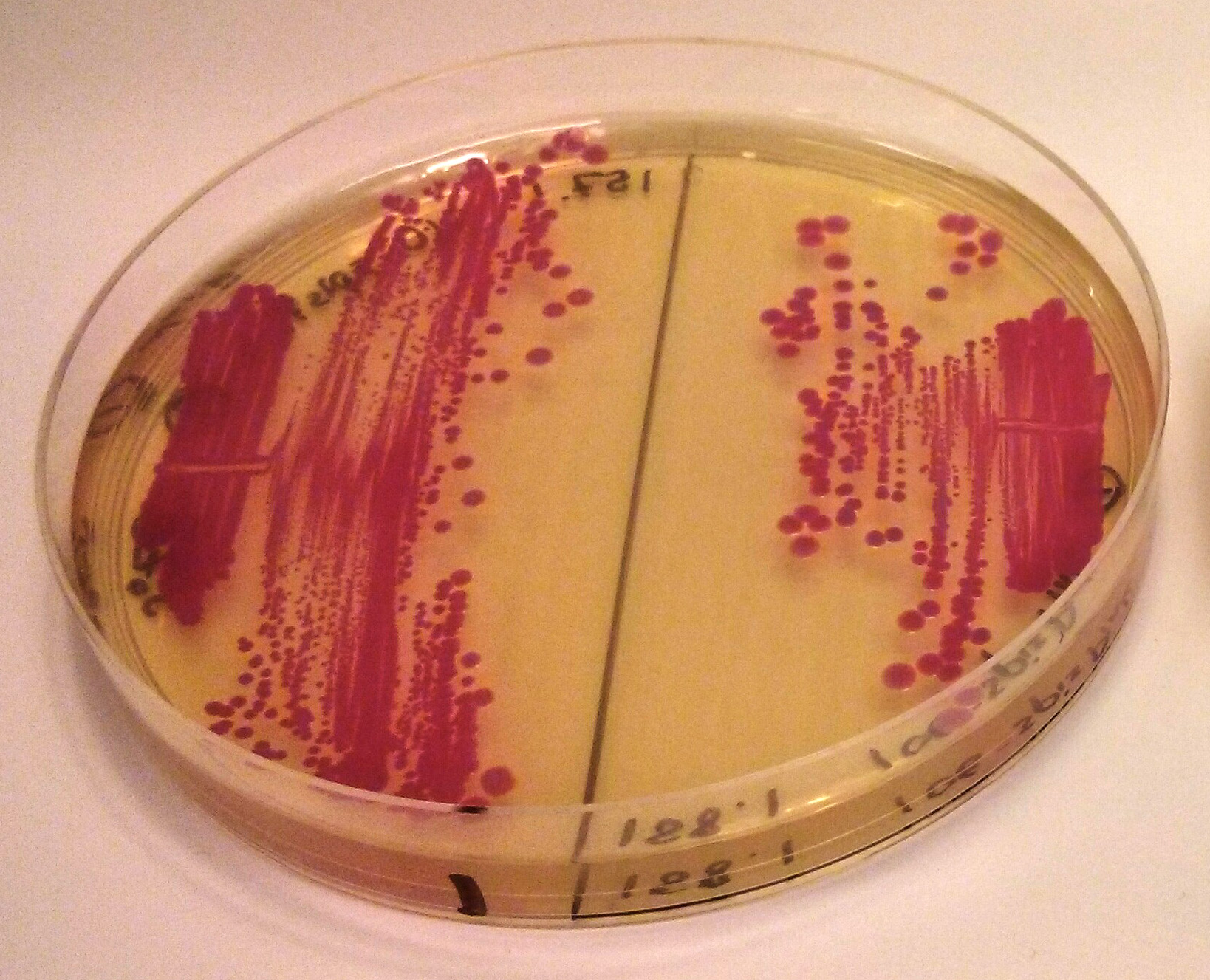Difference between revisions of "Part:BBa K1033923"
(→Characterisation) |
(→References) |
||
| Line 63: | Line 63: | ||
===References=== | ===References=== | ||
[http://www.ncbi.nlm.nih.gov/pubmed/18648549] Alieva, Naila O., et al. "Diversity and evolution of coral fluorescent proteins." PLoS One 3.7 (2008): e2680. | [http://www.ncbi.nlm.nih.gov/pubmed/18648549] Alieva, Naila O., et al. "Diversity and evolution of coral fluorescent proteins." PLoS One 3.7 (2008): e2680. | ||
| + | |||
| + | [https://www.ncbi.nlm.nih.gov/pmc/articles/PMC5946454/] Liljeruhm, Josefine et al. “Engineering a palette of eukaryotic chromoproteins for bacterial synthetic biology.” Journal of biological engineering vol. 12:8. 10 May. 2018, doi:10.1186/s13036-018-0100-0 | ||
Revision as of 13:26, 14 October 2019
spisPink, pink chromoprotein (incl RBS, J23110)
This chromoprotein from the coral Stylophora pistillata, spisPink (also known as spisCP), naturally exhibits strong color when expressed. The protein has an absorption maximum at 560 nm giving it a pink color visible to the naked eye. The strong color is readily observed in both LB or on agar plates after less than 24 hours of incubation. The protein spisPink has significant sequence homologies with proteins in the GFP family.
Usage and Biology
This part is useful as a reporter.
iGEM2013 Uppsala: The images above show E coli constitutively expressing spisPink BBa_K1033925 from the high copy plasmid pSB1C3 from the promoters J23110 (left) and J23106 (right).
Characterisation
Team: Humboldt_Berlin 2019
ExPASy ProtParam Results:
Number of amino acids: 223
Molecular weight: 24815.62 Da
Theoretical pI: 8.23
Total number of negatively charged residues (Asp + Glu): 26
Total number of positively charged residues (Arg + Lys): 28
Extinction coefficients:
Ext. coefficient 24660 M-1 cm-1
Abs 0.1% (=1 g/l) 0.994, assuming all pairs of Cys residues form cystines
Ext. coefficient 24410 M-1 cm-1
Abs 0.1% (=1 g/l) 0.984, assuming all Cys residues are reduced
Instability index: The instability index (II) is computed to be 26.85. This classifies the protein as stable.
Aliphatic index: 67.35
Grand average of hydropathicity (GRAVY): -0.352
In order to measure the absorbance spectrum of spisPink we transformed the construct (consisting of J23110 Promotor, a RBS and spisPink coding sequence) into E. coli (DH10B Competent Cells). After cultivation and we lysed the harvested cells according to this protocol.
The absorbance spectrum was measured for 24 samples of 150 µl lysate in 96-well plate on TECAN Plate Reader Infinite 200 Pro. In figure 1 you can see the relative absorbance spectrum including the respective standard deviation with a peak at 562 nm (compared to a excitation maximum of 560 nm in the literature [4]).
Source
Stylophora pistillata. The protein was first extracted and characterized by Alieva et. al. under the name spisCP (GenBank: ABB17971.1). This version is codon optimized for E coli by Genscript.
References
[http://www.ncbi.nlm.nih.gov/pubmed/18648549] Alieva, Naila O., et al. "Diversity and evolution of coral fluorescent proteins." PLoS One 3.7 (2008): e2680.
[1] Liljeruhm, Josefine et al. “Engineering a palette of eukaryotic chromoproteins for bacterial synthetic biology.” Journal of biological engineering vol. 12:8. 10 May. 2018, doi:10.1186/s13036-018-0100-0
Sequence and Features
- 10COMPATIBLE WITH RFC[10]
- 12INCOMPATIBLE WITH RFC[12]Illegal NheI site found at 7
Illegal NheI site found at 30 - 21COMPATIBLE WITH RFC[21]
- 23COMPATIBLE WITH RFC[23]
- 25COMPATIBLE WITH RFC[25]
- 1000COMPATIBLE WITH RFC[1000]




